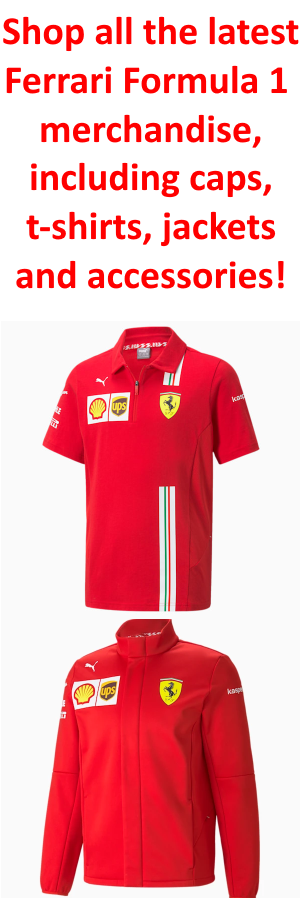After the winter break, the wait is lastly virtually over. Beginning tomorrow, the Components 1 groups will return to the observe in Sakhir for the one official take a look at session earlier than the beginning of the 2025 season, which is able to happen in mid-March in Melbourne.
For the groups, which have already coated their first kilometers throughout filming days, this would be the solely alternative to correctly fine-tune their automobiles with out the standard restrictions current throughout filming days, the place, for instance, demo tires are used. Three days of testing, totaling 24 hours on observe—from 10 AM to 2 PM and from 3 PM to 7 PM native time—will start to outline the preliminary aggressive steadiness.
In comparison with 2024, there is a vital change to remember. Whereas final yr’s tires have been basically a continuation of these launched in mid-2023, permitting groups to already perceive a few of their traits, this season’s tires shall be fully new—not simply when it comes to compounds but in addition of their construction, which has been modified to accommodate the rising a great deal of the automobiles.
The take a look at may even function a chance to see the vary of tires that Pirelli has homologated for 2025 in motion. All six homologated dry-weather compounds shall be obtainable for the Sakhir assessments, and they are often recognized as seen within the picture. The C1 and C2 can have white markings, the C3 and C4 can have yellow markings, whereas the C5 and the brand new C6 can have pink markings. To additional differentiate them inside every group, three of those compounds is not going to have aspect bands, whereas the remaining ones will.
After debuting within the 2024 Mexico and Abu Dhabi assessments, the brand new C6 shall be obtainable to all groups this yr. That is the softest compound of all, meant to be used in GPs held on avenue circuits or tracks that generate low vitality hundreds. Given the traits of Bahrain’s asphalt, which could be very aggressive on tires, it’s unlikely for use in Sakhir, a lot in order that solely two groups have chosen it.
As for the opposite compounds, the C1 stays the toughest, unchanged from 2024, and continues to be similar to final yr’s model, whereas the C2 has been moved nearer to the C3, which is probably the most versatile when it comes to steadiness. The C4 has been developed to scale back graining, as has the C5.
For the Sakhir occasion, every crew was allowed to decide on as much as 35 units of tires, of which 30 will really be mounted on rims to be used on observe. Nevertheless, inside these 35 units, groups might freely allocate their choice, and an evaluation of their selections reveals some fascinating insights.
Traditionally, Bahrain is a really demanding circuit for tires as a result of its aggressive asphalt, to the purpose that the three hardest compounds are historically chosen for the Grand Prix. Nevertheless, the Sakhir assessments additionally function preparation for the championship, which is why the C3, probably the most “intermediate” compound within the vary and the one almost definitely for use all through the season, may even be probably the most utilized.
Mercedes is the crew that has chosen probably the most C3 units, with 27, whereas Williams sits on the reverse excessive with solely 15 units of this compound. These two groups swap locations relating to the C2: Carlos Sainz and Alexander Albon’s crew has chosen 12 units, specializing in the more durable tires, whereas George Russell and Kimi Antonelli can have solely two.
Talking of Mercedes, together with Ferrari, it’s the prime crew that has favored the softer compounds probably the most. The Maranello squad will use solely three units of C1 and, notably, simply 4 units of C2, as a substitute prioritizing the C3. Apparently, Ferrari has additionally chosen to convey 5 units of C4 and, together with Williams, is the one crew to have chosen one set every of C5 and C6. This allocation means that Ferrari goals to higher perceive how one can handle the warm-up part of the softer compounds in qualifying circumstances, an space the place the SF-24 had proven weaknesses.
The scenario is totally totally different for McLaren and Purple Bull, which have opted to give attention to the more durable compounds. McLaren will convey 5 units of C1—fewer solely than Aston Martin and Alpine—together with 9 units of C2. Purple Bull, however, has made a barely totally different choice, with solely two units of C1 however as many as 11 units of C2. It’s doubtless that a few of these units shall be used for typical aerodynamic data-gathering assessments.
It is usually fascinating to notice the alternatives of Aston Martin and Alpine, which have centered fully on the toughest compounds, to the purpose of not bringing a single set of C4. Final yr, the AMR24 usually struggled with tire degradation, so it may be assumed that Aston Martin will conduct repeated medium-length stints throughout these assessments to evaluate tire habits beneath totally different setup circumstances.



